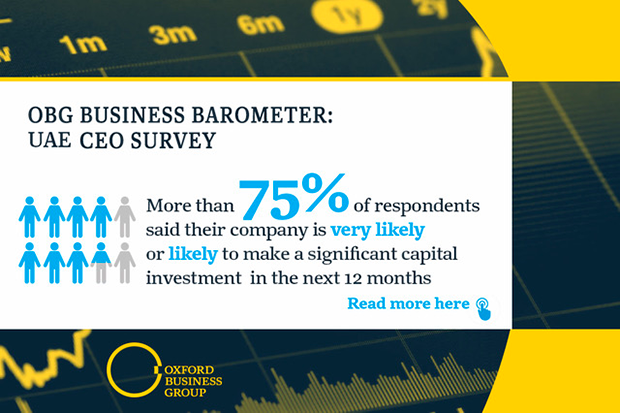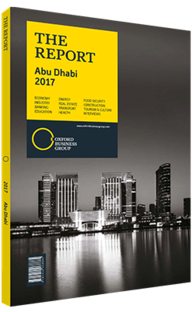Abu Dhabi committed to procyclical fiscal policy
Both the federal government of the UAE and the government of Abu Dhabi have done much to cut expenditure since 2015. However, with the medium-term outlook suggesting that the fiscal breakeven price will remain above the projected oil price and the emirate set on diversifying its economy in line with the Abu Dhabi Economic Vision 2030, the need for yet more fiscal consolidation is evident. The UAE has also set itself the target of further narrowing the non-hydrocarbons fiscal deficit to 8.6% of non-hydrocarbons GDP by 2021, and producing a balanced budget as soon as 2018, according to the IMF’s 2016 Article IV consultation for the UAE. Achieving these ambitious goals calls for a broad-based reform of government expenditure, and in 2016 the government’s consultations with the IMF revealed that five initiatives in particular will lead its efforts in this regard.
Vat
The first of these initiatives is the introduction of value-added tax (VAT), which will be implemented in Abu Dhabi and the wider UAE starting on January 1, 2018, following a GCC-level agreement reached in mid-2016. The UAE Ministry of Finance has estimated that VAT has the potential to add Dh10bn-12bn ($2.7bn-3.3bn) to the nation’s revenue in the first year of operation alone. To put this in perspective, the federal government was projected to bring in Dh153bn ($41.7bn) in taxes in 2016, according to IMF estimates, meaning that even if the ministry’s more conservative estimate is used, the new tax will boost revenue by around 6.5% (see analysis).
Taxes & Fees
The second measure that the federal government plans to adopt in its pursuit of fiscal consolidation is an increase in excise taxes on tobacco and alcohol, as well as a broadening of the excise levy to include soft drinks, starting in 2018. Once again, this is an area that has arisen as a concern for the wider GCC, as well as the UAE, with the six member states attempting to act in concert to avoid competition and discourage cross-border smuggling. In November 2015 ministers of finance from the region agreed on the introduction of a uniform 100% tax on all tobacco products, a move that came in response to widening budget deficits around the Gulf. Since that time both Saudi Arabia and Bahrain have introduced additional fees on tobacco, which in the case of the latter have added around 40% to the price of a pack of cigarettes. A larger role for excise duties – which are taxes levied on goods produced or sold within the country – in the revenue mix is an interesting development in the UAE, which has traditionally relied heavily on trade taxes to bulk up its non-oil revenue take.
Raising revenue on the back of cigarette sales, in particular, is easily justified on health grounds in the UAE, where levels of smoking are bucking a trend seen in developed markets by increasing rather than declining. In March 2015 Farida Al Hosani, director of public health at the Communicable Diseases Department at the Health Authority - Abu Dhabi, warned that the widespread use of shishas (water pipes) were a challenge, and that the consequences of their use are not sufficiently understood. The wider GCC is home to approximately 4m smokers who consume around 50bn cigarettes each year, with an associated health care cost estimated at more than $500m per year, according to Qatar’s Supreme Council of Health.
In January 2017 more light was shed on the wider GCC effort to adopt a region-wide approach to increasing taxes on certain areas of consumption and goods. Dubai-based daily Khaleej Times reported in January 2017 that Abdulrahim Hassan Al Naqi, secretary-general of the Federation of Chambers of the GCC, stated the bloc will gradually implement a selective tax on 93 commodities, beginning in the second quarter of 2017, and expanding to cover all six member states by 2018. Items on the list include tobacco, alcohol, soft drinks and luxury cars. Despite the multilateral nature of the initiative, however, each state has the ability to set the rate of its own selective tax; and therefore, the level that the UAE settles on as it sets about introducing its selective tax is likely to be a significant talking point for concerned parties over the course of 2017.
Bringing In Revenue
A third pillar of the UAE’s consolidation strategy concerns the mechanisms by which revenue is collected. The Abu Dhabi authorities have a stated commitment to “continued improvements” of the fee structure applied to the emirate, as well as the revenue transfer mechanism to the federal government. The most visible result of this effort to date has been the establishment of the UAE Federal Tax Authority (FTA), which came into being in legal terms through a decree issued by Sheikh Khalifa bin Zayed Al Nahyan, president of the UAE and ruler of Abu Dhabi, in October 2016. The new body is mandated with creating and maintaining records on taxpayers and taxes paid, as well as releasing guidelines to taxpayers on issues related to the tax system and related fees. The FTA will also represent the UAE at regional and international meetings and conferences concerning tax issues, of which there are likely to be an increasing number over the coming years as the GCC continues with its policy of multilateral tax reform.
The new body is likely to be particularly concerned in the short term with the tax collection mechanism related to intra-GCC trade, which in 2016 had not been fully resolved despite the government-level approval of the VAT and excise tax treaties in June of that year. In terms of the domestic collection mechanism, one of the FTA’s most important functions will be the collection of federal revenue and fees, which will be deposited in an independent account, pending their distribution to the federal and local governments.
Gre & Spending
The Abu Dhabi government also plans to continue with its policy of scaling back grants and capital transfers to government-related entities (GREs) as part of its budget-trimming exercise of recent years. Strengthening the balance sheets of GREs has been a preoccupation of the authorities since the global financial crisis of 2008, and much has been done to step up the oversight of their investment and debt plans. However, reducing transfers to GREs is a challenging task; their activities have been a major source of growth for the local economy and they have historically acted as a significant driver of infrastructure development. While reducing capital transfers to GREs may be a fiscal priority, any judgment of the efficacy of the policy must take into account the wider economic impact. Moreover, in the case of GREs that are highly leveraged and faced with a heavy debt burden, reducing the amount of government funding raises the risk of liquidity problems and consequent government bailouts.
The manner in which GREs pursue alternative sources of funding, such as through bond issuance, is therefore an increasingly salient issue at the macroeconomic level. Long-term sustainability requires a close monitoring of the debt burden of the country’s GREs, and in Abu Dhabi the emirate’s Debt Management Office (DMO) plays a crucial role in ensuring the authorities have good visibility on the debt position of state and quasi-state institutions. In 2016 the DMO’s efforts to assess and contain GREs’ level of borrowing were praised by the IMF in its 2016 Article IV consultation, which went on to recommend that its approach be adopted at the federal level.
Public Sector
Lastly, stabilisation of the public wage bill is also a focus of the federal government’s medium-term fiscal strategy. The benefits of reining in the headcount and salary bill of the UAE’s civil service extend beyond the obvious reduction of public expenditure. The job security, relatively high salaries and generous benefits associated with government employment have had a distorting effect on labour markets across the Gulf region for many years.
In numerous areas of economic activity, the private sector has struggled to attract suitable candidates for employment, a phenomenon that has undercut attempts to diversify the economy away from a reliance on hydrocarbons-related activity. Restricting public sector salary growth is the most direct way to tackle this issue, but it is likely to be paired with a labour market strategy aimed at creating viable private sector employment opportunities for UAE nationals. This may include initiatives to improve the skills-jobs match in the country, the promotion of entrepreneurship and incentives to hire Emiratis. One such example is a recent regulation by the UAE’s Securities and Commodities Authority requiring that at least 20% of the board of any listed company is composed of women, on a “comply or explain” basis.
The UAE’s medium-term fiscal consolidation strategy is by necessity a mixture of both federal and local initiatives, which, when taken together, have the potential to significantly curb current spending and diversify non-oil revenue. The real challenge, as always, will be in the implementation of a wide-ranging plan that will require the cooperation of myriad government bodies and the support of the wider public.
You have reached the limit of premium articles you can view for free.
Choose from the options below to purchase print or digital editions of our Reports. You can also purchase a website subscription giving you unlimited access to all of our Reports online for 12 months.
If you have already purchased this Report or have a website subscription, please login to continue.


